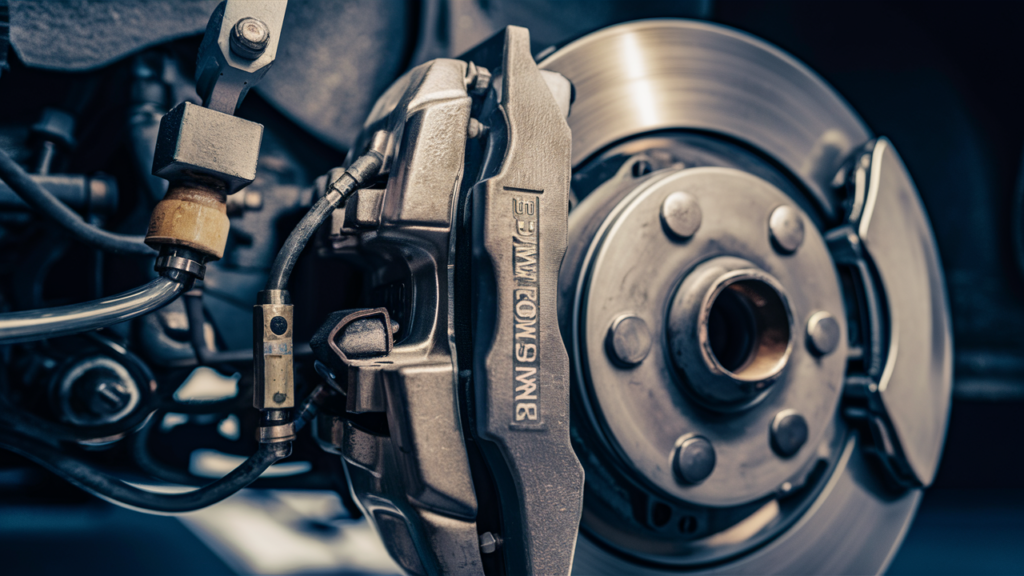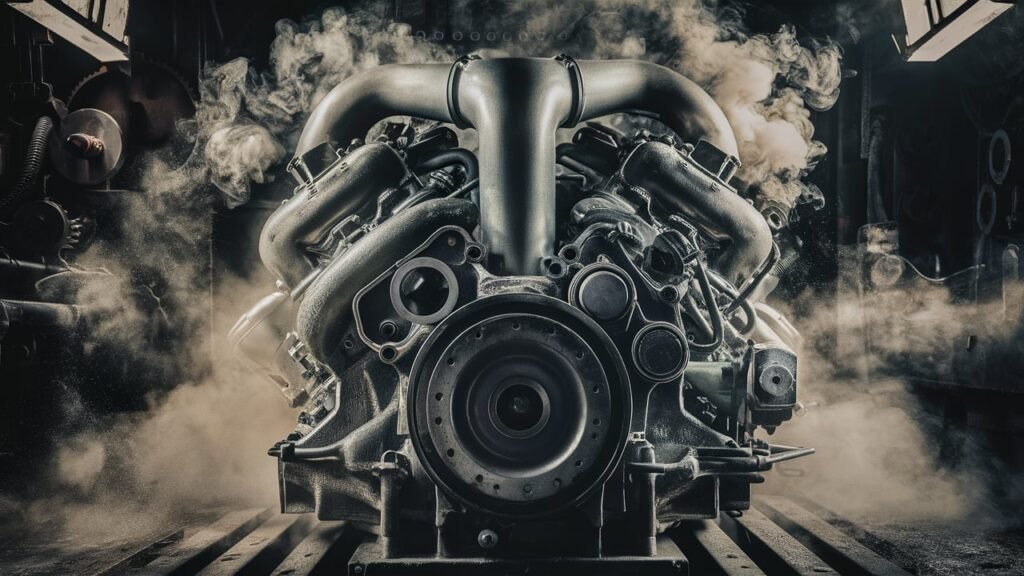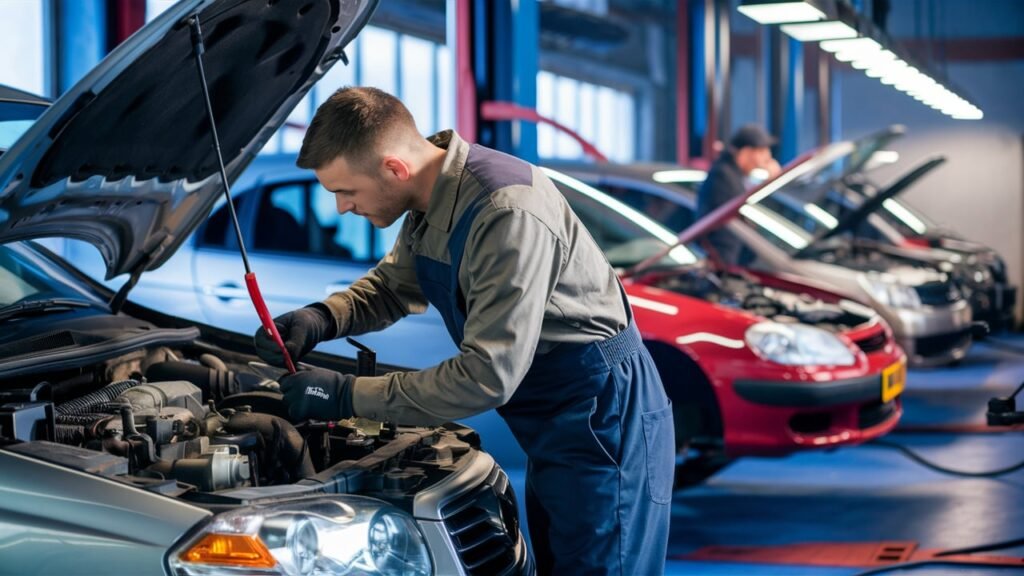
7 Essential Components of a Hydraulic Brake System Explained
In the intricate world of automotive engineering, one crucial system stands as a beacon of safety—the hydraulic brake system. At the heart of every vehicle lies this complex network of components meticulously designed to ensure precise and efficient braking performance.
From the moment a driver gently depresses the brake pedal to the swift halt on a bustling street corner, each element within the hydraulic brake system seamlessly collaborates to execute controlled deceleration.
As we delve into unraveling the inner workings of this pivotal system, we illuminate the key players—the seven essential components that harmonize in unison to deliver reliable stopping power.
Embark on a journey through the inner sanctum of vehicular safety as we explore the intricacies of hydraulic braking technology—a fusion of mechanical prowess and hydraulic finesse tailored for optimal driver control.
Delve deeper into understanding how each component plays a vital role in converting foot pressure into stopping force, ensuring smooth deceleration with precision unmatched by traditional braking systems.
Join us in dissecting these fundamental building blocks—the reservoir, master cylinder, brake lines, calipers, pads, disc brakes vs. drum brakes, and the indispensable anti-lock braking system (ABS).
Unravel alongside us as we demystify these components to unveil their critical functions in maintaining road safety with unparalleled reliability and performance. Let’s embark on an enlightening exploration that not only enlightens but empowers enthusiasts and mechanics alike with profound insights into the intricate world of hydraulic braking dynamics.
Brake Fluid Reservoir.
The brake fluid reservoir acts as the heart of a hydraulic brake system, storing the hydraulic fluid that enables the transfer of force from the brake pedal to the braking components. This vital component ensures that when you press down on the brake pedal, the force is transmitted evenly throughout the system to slow down or stop your vehicle efficiently.
Without an adequate amount of brake fluid in the reservoir, there would be a significant reduction in braking power and potentially catastrophic consequences. It is crucial to regularly check and maintain proper levels of brake fluid to guarantee optimal braking performance and safety on the road.
One telltale sign of low brake fluid level is a soft or spongy feeling in the brake pedal, indicating air might have entered the system due to insufficient fluid. Another indicator is if your dashboard warning light illuminates, signaling a potential issue with your brake fluid level.

Additionally, if you notice decreased stopping power or hear strange noises like squealing while applying brakes, it could be attributed to insufficient brake fluid in the reservoir. Ignoring these signals can lead to compromised braking efficiency and even complete failure, underscoring why monitoring and replenishing brake fluid levels are paramount for safe driving habits.
In essence, maintaining an adequate level of brake fluid in the reservoir ensures that your vehicle’s hydraulic braking system functions optimally when you need it most—during sudden stops or emergency situations.
By staying vigilant about checking for signs of low brake fluid and addressing them promptly, drivers can uphold their safety on the road while prolonging the longevity of their vehicles’ braking components. The integrity of this essential component not only guarantees smooth operation but also reflects a commitment to proactive maintenance practices for reliable and secure driving experiences.
Master Cylinder.
The master cylinder serves as a crucial component in a hydraulic brake system, responsible for converting mechanical force generated by the driver pressing on the brake pedal into hydraulic pressure needed to activate the brakes. Located near the brake fluid reservoir, the master cylinder contains pistons that are moved by the pressure from the pedal.
These pistons then transmit the force through the brake fluid to each wheel’s brake caliper or drum assembly, resulting in proper braking action. Essentially, the master cylinder acts as a hydraulic pump that amplifies and translates human input into stopping power for the vehicle.
When discussing common issues with master cylinders, one must consider problems like leaks, internal malfunctions, or seal degradation. For example, a failing master cylinder might lead to soft or spongy brake pedals due to air entering the system or loss of hydraulic pressure.
In some cases, a defective master cylinder may cause brakes to drag even when not engaged fully, affecting fuel efficiency and potentially causing overheating of components. Therefore, regular inspection and maintenance of the master cylinder are essential to ensure safe and efficient braking performance.
Understanding how these issues can impact braking safety underscores why DIY mechanics and drivers should be aware of signs indicating potential master cylinder problems such as brake fluid leaks under the car or visible damage to external seals.
By promptly addressing any irregularities with professional help when necessary, individuals can maintain their hydraulic brake systems’ integrity and reliability. The functionality and condition of a master cylinder play a vital role in ensuring that vehicles can stop safely and effectively when needed.
Brake lines.
Brake lines play a crucial role in a hydraulic brake system, serving as the conduits that carry pressurized brake fluid from the master cylinder to the braking components at each wheel. These lines are typically made of materials like steel, rubber, or braided stainless steel.
Steel lines offer durability and resistance to damage from road debris but can be prone to rust over time. On the other hand, rubber lines are more flexible and cost-effective but may degrade faster due to exposure to heat and chemicals. Braided stainless steel lines strike a balance between flexibility and durability, making them a popular choice for high-performance applications.
Regular inspections and maintenance of brake lines are essential for ensuring the integrity of the braking system. Over time, brake lines can develop leaks due to corrosion or damage from external factors.
Fluid leaks compromise the hydraulic pressure necessary for effective braking, leading to potential safety hazards. Inspecting brake lines for signs of wear, corrosion, or leaks should be part of routine vehicle maintenance. Addressing any issues promptly can help prevent brake failures and maintain optimal braking performance.

An example highlighting the importance of brake line maintenance could be seen when upgrading a vehicle with aftermarket performance brakes. In such cases, switching to braided stainless steel lines is often recommended for better pedal feel and improved responsiveness due to reduced expansion under pressure compared to traditional rubber lines.
This upgrade not only enhances braking performance but also underscores how choosing the right type of brake line can impact overall driving experience and safety. Considering these nuances when selecting and maintaining brake lines can contribute significantly to the efficiency and reliability of a hydraulic brake system while ensuring safe operations on the road.
Brake Calipers.
Brake calipers play a vital role in the hydraulic brake system by converting hydraulic pressure into mechanical force to squeeze the brake pads against the rotor, resulting in vehicle deceleration. These components are typically located near the wheels and contain pistons that push against the brake pads when you press the brake pedal.
Fixed calipers have pistons on both sides of the rotor, providing consistent pressure, while floating calipers have pistons on only one side, allowing for easier installation but potentially uneven pad wear. Understanding which type your vehicle employs can aid in maintenance and troubleshooting efforts.
Fixed calipers offer superior braking performance due to their symmetrical design, minimal flex during operation, and reduced heat distortion under heavy braking conditions. On the other hand, floating calipers tend to be simpler to manufacture and maintain but may exhibit more uneven wear over time.
Regardless of the type installed on your vehicle, ensuring proper lubrication of the caliper pins and slides is crucial for smooth operation and even pad contact with the rotor. Neglecting this maintenance aspect can lead to uneven braking or premature wear on brake components.
To illustrate further, imagine a fixed-caliper setup functioning akin to clamping forceps with synchronized pressure distribution on either side of the rotor, ensuring optimal braking power. In contrast, floating calipers operate more like pincers pressing onto one side of the rotor when engaged.
By appreciating these distinctions in how different types of calipers interact with rotors and pads during braking maneuvers, car owners can better grasp why regular cleaning and lubrication routines are essential for preserving efficient and balanced braking performance over extended periods.
Brake pads.
Brake pads play a crucial role in the smooth operation and safety of a hydraulic braking system. These components are the friction material that comes into contact with the brake rotor when you press the brake pedal, converting kinetic energy into heat to slow down or stop your vehicle.
Brake pads are designed to endure intense pressure and heat generated during braking without compromising performance. Depending on the type of driving conditions and preferences, brake pads are made from various materials like ceramic, semi-metallic, or organic compounds.
Ceramic brake pads are known for their superior heat dissipation properties and quieter operation compared to other materials. They provide excellent stopping power while producing less dust, making them a popular choice for daily drivers seeking consistent performance.

On the other hand, semi-metallic brake pads contain metal fibers within the friction compound, offering enhanced durability and performance under high-temperature conditions often found in heavy-duty applications or aggressive driving styles.
Organic brake pads excel in providing a smoother braking experience and are environmentally friendly due to their composition of natural materials like rubber, glass, and resins.
Identifying signs of worn-out or failing brake pads is essential for maintaining optimal braking efficiency and safety. Squealing or grinding noises when applying brakes could indicate worn friction material that needs replacement. Reduced braking responsiveness or longer stopping distances are also red flags signaling deteriorating brake pad condition.
Moreover, visual inspection through wheel removal can reveal thinning brake pad thickness near minimum specifications. Regular checks and timely replacement of worn-out brake pads can prevent damage to other crucial braking components within the hydraulic system, ensuring reliable stopping power on every drive.
Disc Brakes vs Drum Brakes.
When it comes to braking systems in vehicles, the choice between disc brakes and drum brakes is crucial for performance and safety. Disc brakes and drum brakes represent two primary technologies used in hydraulic brake systems, each with its unique advantages and shortcomings.
Disc brakes offer superior performance due to their ability to dissipate heat more effectively than drum brakes. The design of disc brakes allows for quicker cooling, making them less prone to brake fade during intense usage, such as repeated hard braking or descending steep grades.
On the other hand, drum brakes are generally less effective at dissipating heat buildup, which can lead to reduced braking efficiency under demanding conditions.
In terms of cost, drum brakes are often considered a more cost-effective option compared to disc brakes. The simpler design of drum brakes typically translates to lower manufacturing costs, making them an attractive choice for budget-friendly vehicles or applications where peak performance is not the primary concern.
Conversely, while disc brakes may incur higher initial costs due to their complexity and materials used, they often provide better long-term value through improved overall performance and reduced maintenance requirements.
Modern vehicles predominantly feature disc brakes on the front wheels and sometimes on all four wheels. This preference stems from several factors, including enhanced stopping power, better heat dissipation leading to consistent braking performance, and improved responsiveness under various driving conditions.
Additionally, the ease of servicing and maintenance associated with disc brake systems contributes to their widespread adoption in contemporary automotive designs. However, certain specialized applications or older vehicle models may still utilize drum brakes on specific axles for reasons like parking brake functionality or simplicity in operation.
Anti-lock Braking System (ABS).
The Anti-lock Braking System (ABS) is a pivotal component that works symbiotically with the hydraulic brake system to avert wheel lock-up during sudden stops on slippery surfaces or in emergency braking scenarios.
ABS showcases its prowess by modulating brake pressure rapidly when it detects an impending skid, thus allowing the driver to retain steering control and stability while the vehicle decelerates. This dynamic function separates ABS-equipped vehicles from their non-ABS counterparts, significantly enhancing safety in adverse driving conditions.
One of the key advantages of ABS is its ability to prevent wheel lock-up, which can lead to loss of traction and directional control, especially on wet or icy roads. By intermittently releasing and reapplying brake pressure at each wheel, the system minimizes skidding tendencies, ensuring that tires grip the road surface effectively throughout the braking process.

This capability not only reduces stopping distances but also contributes to accident prevention by mitigating the risk of uncontrolled spins or veering off course during abrupt maneuvers.
To uphold peak performance of an ABS within a hydraulic braking setup, regular maintenance practices are imperative. Ensuring that sensors are clean and undamaged, monitoring warning lights for potential malfunctions, and promptly addressing any unusual noises or sensations during braking are fundamental steps in preserving ABS functionality.
Proactive inspection and adherence to manufacturer-recommended service intervals help sustain the intricate balance between mechanical precision and electronic control that characterizes modern ABS systems, fortifying overall vehicular safety on diverse road surfaces and under varying driving conditions.
Hydraulic Brake System Troubleshooting.
Maintaining a hydraulic brake system requires vigilance for potential issues that may compromise safety. Common problems in hydraulic brake systems often stem from air bubbles, leaks, or worn components. When air enters the brake lines due to improper bleeding after maintenance or repairs, it can lead to a spongy pedal feel and reduced braking effectiveness.
Leaks, whether from damaged brake lines or faulty seals on components like calipers or the master cylinder, can result in a loss of brake fluid pressure and compromised stopping power. Additionally, worn-out brake pads or warped rotors can cause uneven braking, leading to instability during deceleration.
When faced with symptoms of a problematic hydraulic brake system, it’s crucial to know how to diagnose and address these issues promptly. A simple step-by-step guide can help DIY enthusiasts identify common problems like spongy pedals or uneven braking using basic tools at home.
For instance, checking the brake fluid level in the reservoir regularly is a good initial troubleshooting step—low fluid levels could indicate a leak in the system that needs urgent attention. Also, conducting visual inspections of the brake lines for any signs of damage or seepage can help pinpoint potential sources of leaks that warrant immediate repair.
While some hydraulic brake system issues can be resolved by individuals with moderate mechanical skills and basic tools, there are situations where seeking professional help becomes necessary. More complex problems such as internal seal failure within the master cylinder or ABS malfunctions may require specialized knowledge and equipment to rectify effectively.
If diagnostic efforts at home do not yield clear results or if there is any doubt about the safety and efficacy of the brakes after troubleshooting attempts, consulting a certified mechanic or technician is advisable to ensure thorough inspection and proper resolution of intricate hydraulic system complications.
Remembering that brakes are an integral safety feature in vehicles underscores the importance of timely intervention when dealing with hydraulic system challenges to prevent accidents caused by compromised braking performance.
Conclusion: Ensuring Brake System Safety.
In conclusion, a hydraulic brake system is a critical component of any vehicle, ensuring safe and reliable braking performance. By understanding the seven essential components – the brake fluid reservoir, master cylinder, brake lines, brake calipers, brake pads, disc brakes vs drum brakes, and the Anti-lock Braking System (ABS) – drivers and mechanics can better grasp the intricacies of how this vital system functions.
To maintain optimal brake system safety:
– Regularly inspect and maintain all components to prevent failures.
– Keep an eye on fluid levels in the reservoir to ensure proper functioning.
– Replace worn-out parts promptly to prevent potential accidents.
– Understand the differences between various braking components to make informed decisions during repairs or upgrades.
– Seek professional assistance for complex issues that may affect overall system integrity.
Remember, a well-maintained hydraulic brake system not only enhances driving safety but also contributes to a smoother and more enjoyable driving experience. Stay vigilant, stay informed, and prioritize the safety of yourself and others on the road by safeguarding your vehicle’s hydraulic brake system.




